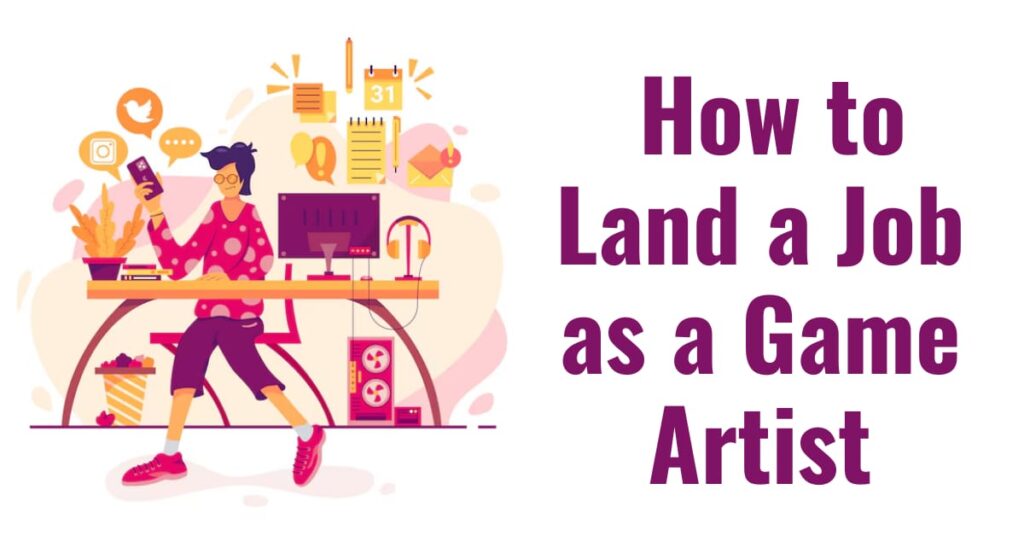
Game designers are successful who create gorgeous, immersive environments. In the ever growing gaming business, game artists develop characters, settings, and aesthetics to capture gamers. Making it as a game artist is a hard, long slog—and not simply creative. It gives a detailed summary on game art fundamentals.
1. Become artistic
When you’re a game artist, you really need to be creative. Character, environmental, idea, and 2D/3D modeling work is needed as game art.
Learn Traditional Art Skills
Even though it is digital centric, gaming is the kind of thing that can benefit from sketching, drawing, and painting. If you are a game artist who aims to sketch, you need anatomy, color theory and composition.
Digital Tools Know
Digital technologies are used by game artists. Photoshop, Blender, Maya, Z-Brush, and Substance Painter are all required. The tools then make 3D modeling, texturing and graphic asset creation easier.
Create a Portfolio
Typically, the game artist’s portfolio gets them hired. It shows your game design and artist skills. Add these to your portfolio:
- Concept character drawings, animations, detail models.
- With landscapes, backdrops, and settings you show how much worldbuilding you’ve done.
- Making 3d models, props and textures.
- Pictures and drawings based on people, settings and tales.
2. Game Design Fundamentals
Video game artists must be game designers.
Study Game Mechanics and UX
It’s important to understand game mechanics, how visuals affect gameplay and usability. It helps you understand how art can reduce player immersion, navigation and plot.
Cooperating with Teams
Collaboration is key to game art success. Programmers and designers work with game artists. Learn how these obligations impact productivity to become a more productive and flexible artist.
3. A well curated portfolio is the way to go with it, when it comes to applying to a job. Unique portfolio advice:
Instead of being focused on Quantity, focus on Quality.
Your portfolio should be short and give your best work. But your variety should be showed through your best work, and your competence must be demonstrated too.
Your Work Portfolio: Personalize it
There may be that gamemakers have preferences. You need to filter portfolio to suit with studios or companies you want to work for.
Presenting Process/Concept
The smarts and effort you bring is what employers want. With drawings, concept art and progression shots, show your creativity and problem solving ability.
Professional work makes good impressions. Animate your game objects in real eyes as if your game object was really existing in the game, or within your game world.
4. Gain Relevance Experience and Marketing Network
Network and skills are needed to make the game artist job.
Personal and Freelance
Showing your deadline and creative talent from a friendly portfolio of freelance and personal projects. Show initiative and expose yourself to potential disasters, create game art for solo, mod, or small team projects to interest clients.
Free jobs and internships for beginners
Networking and gaining some experience comes in the form of internships and entry level jobs with game studios. Game development internships offer both practical experience (game development lifecycle), networking, and process knowledge.
You can connect with other game artists on ArtStation, DeviantArt, and anywhere exiled on LinkedIn. Work sharing, joining the forum, blanketing with industry leaders could get you a job.
5. Changing Your Resume and Application around.
They have to like your CV and cover letter.
Promote Your Unique Skills
Your CV should actually help you to promote creativity, experience, software skills and the rest. Share something creative that you’ve done professionally or freelance.
Match CV to Job
What game creators and companies need is different. It should be what your CV, cover letter, and portfolio look like for each application — as well as what the studio’s goal is.
It Increases Cooperation and Communication
Working with artists, designers, developers is a great idea if you want your app to make a better impression.
6. Test and interview prep
Prep after an interview.
Show problem-solving
Game art is limited by time, imagination and technology. Problems solving and feedback skills.
Show enthusiasm
Game companies like people who like games, who are interested in new tech, and who are willing to learn. Get real industry interest and get respect.
Conclusion
It is therefore talent, effort and strategy that bring game artists to flower. In order to be successful, what one needs is a little innovation, a more developed portfolio, more experience, more application polishing, more of a network embedding. Motivated stay, trend your skills and assist with industry connections to make your way into the fun world of game construction.